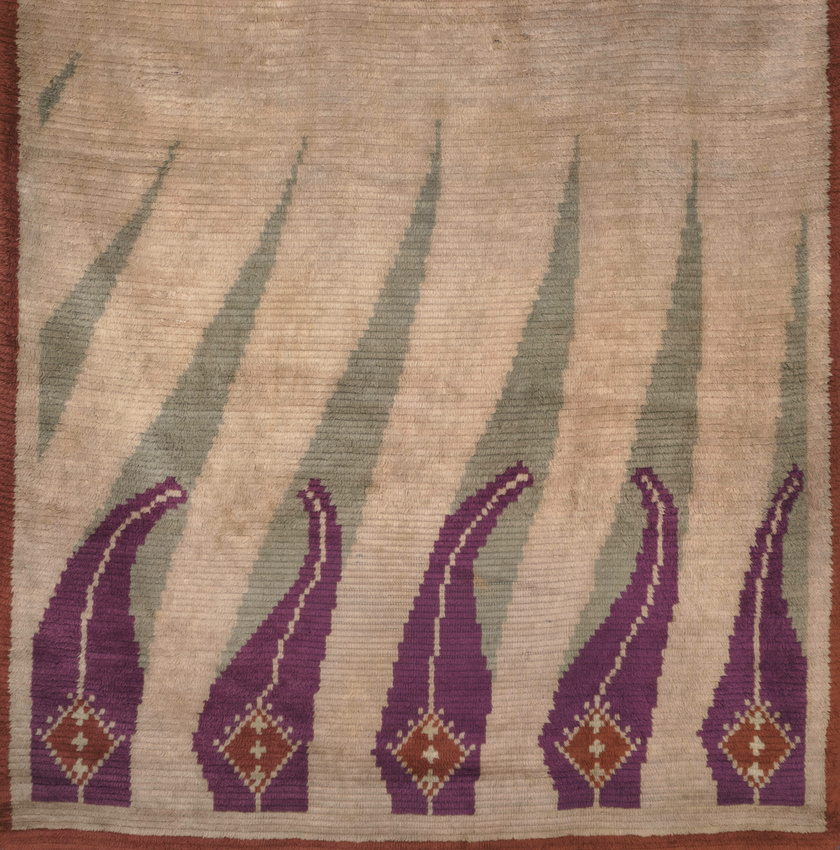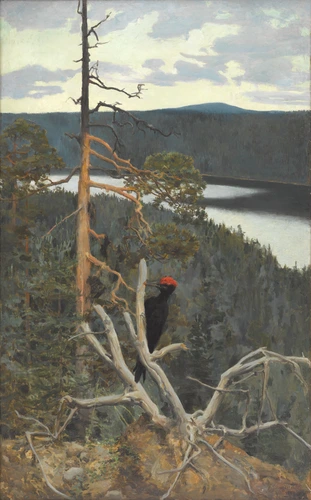Tapis : modèle flamme
During the 1900 Universal Exhibition in Paris, the Finnish pavilion was acclaimed by all who saw it. What astonished and delighted everyone was the ease with which the Finnish national spirit was integrated into the search for contemporary forms, more concerned at the beginning of the 20th century with responding to the new requirements of "modern" man than producing something new for its own sake.
For the building's interior, the architect Eliel Saarinen (1873-1950) stepped aside for another master craftsman, Akseli Gallen-Kallela. Although a painter, he designed a number of the decorative art models– wood panels, furniture, wall hangings, rugs, fabrics, and fireplaces - presented in the pavilion. The textile products were from the workshops of Suomen Käsityön Ystävät (The Friends of Finnish Handicraft), created in Helsinki in 1879 to carry on national traditions and rural skills. This distinctive identity led the Exhibition jury to award it a gold medal. The jury was "particularly [...] impressed by a hanging with a very original composition designed by the artist M. Gallen". This composition, nowadays an icon of Scandinavian design, is none other than this Flame.
The example in the Musée d'Orsay is from a later version created between 1905 and1906. The flames are those from the 1900 version, decorated with a geometric motif inspired by Scandinavian folklore. But the fern motif which ran through the whole tapestry has disappeared, replaced by green tongues giving off red flames. The upper part of the piece has a uniform background of cream beige which creates a particularly dynamic asymmetric effect and a feeling of robust simplicity.



